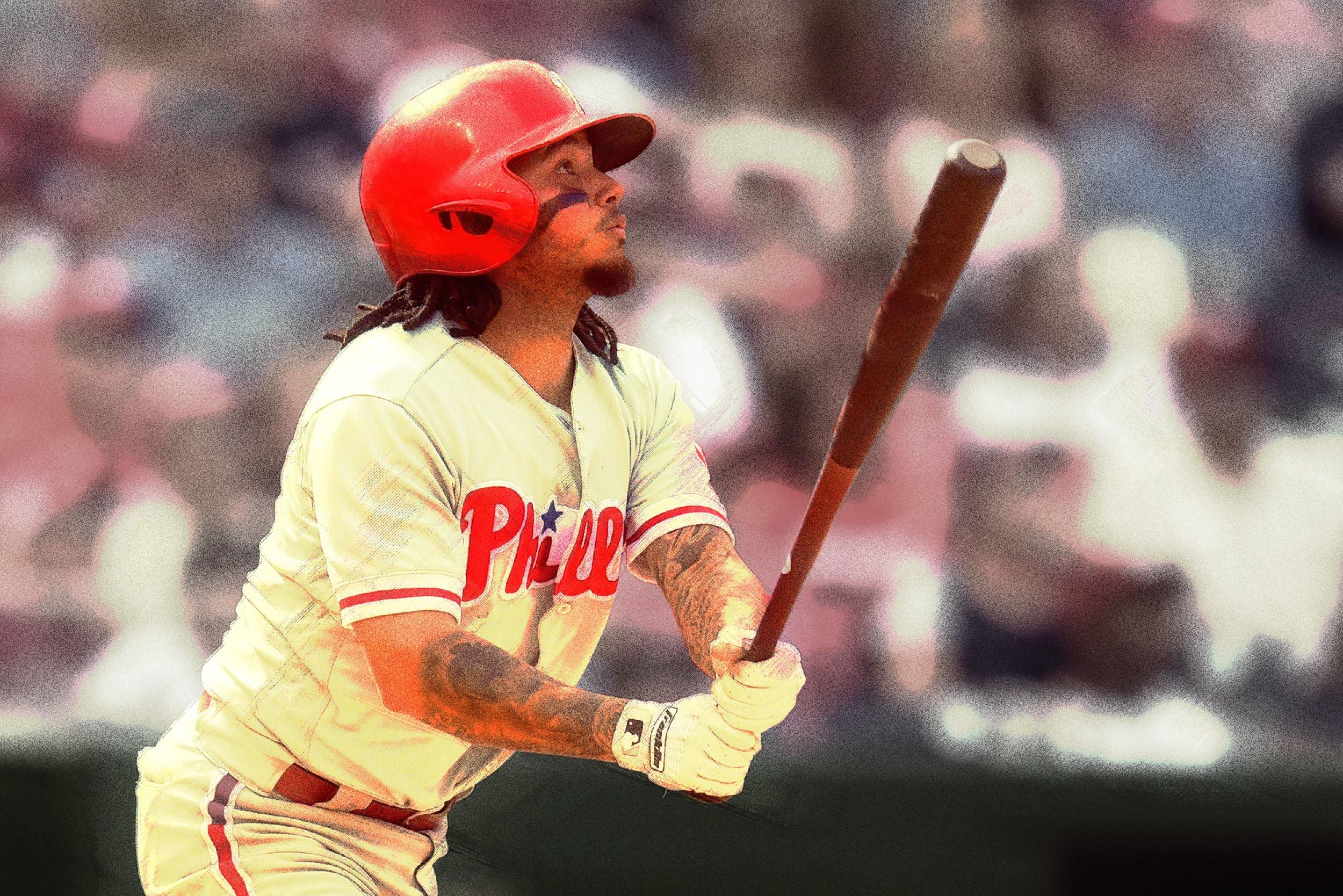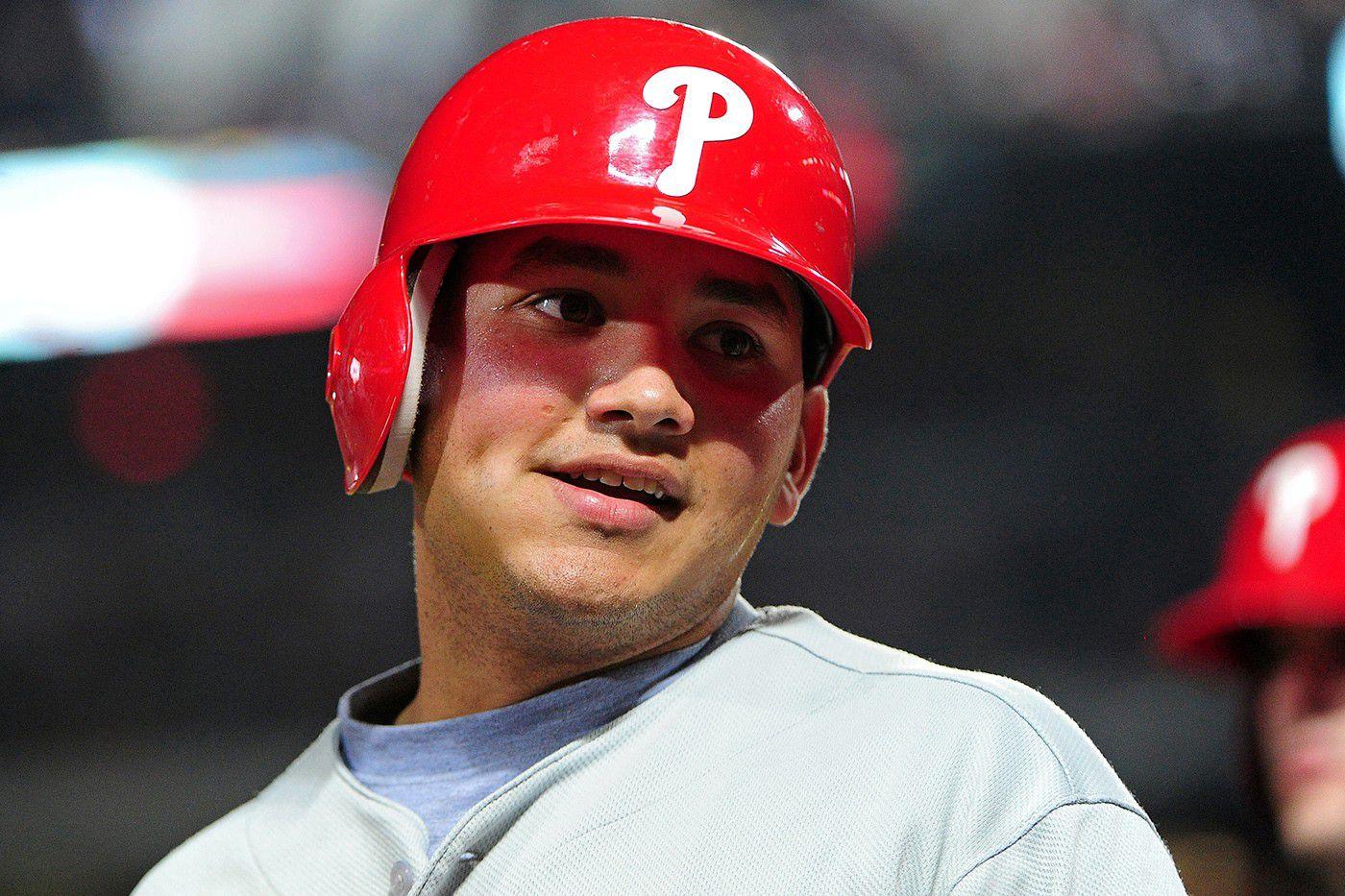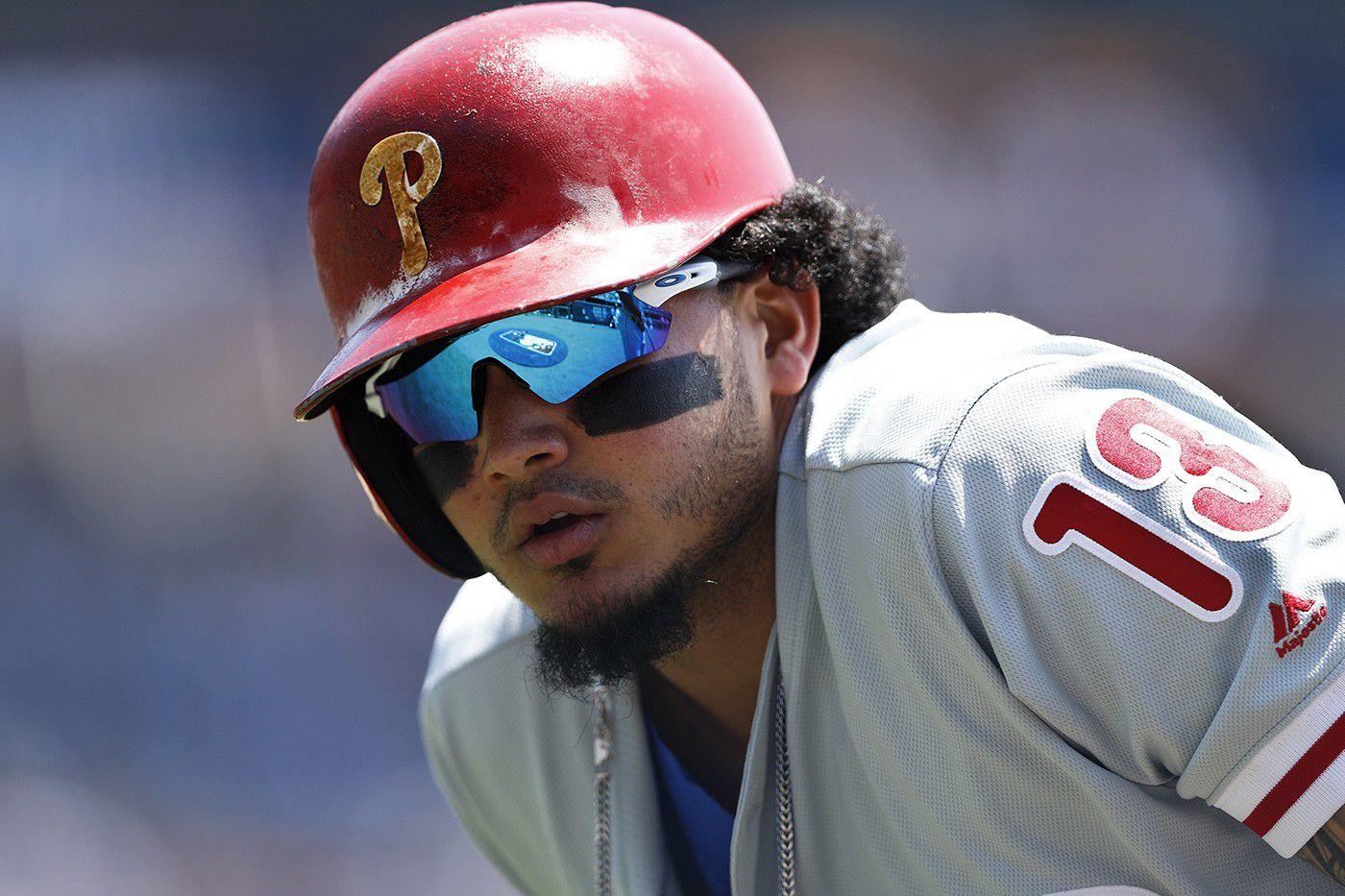
Here’s a fun bit of trivia, courtesy of PhillyVoice’s Ryan Lawrence.
That’s despite a godawful offense that’s produced a 80 wRC+, which is by far the worst mark in baseball.
Even so, three of those four names make at least a little sense. Second-year third baseman Maikel Franco is an up-and-coming power hitter, and while 36-year-old Ryan Howard is a smoldering ruin of the player he once was, the one thing he can still do is hit a ball a long way. As for Tommy Joseph, it’s surprising that he’s in the majors at all, as he’s prospered despite being a 25-year-old with a 51-year-old’s face (otherwise known as Greg Oden’s disease). More importantly, he overcame concussion issues that forced him to move from catcher to first base, and nearly forced him out of baseball altogether. But given that Joseph’s healthy enough to register 322 big league plate appearances, his home run output isn’t a huge shock, given his .182 career minor league ISO and 255-pound frame.
Then there’s the other guy: Freddy Galvis has 20 home runs, and nothing in baseball makes less sense.
Galvis has been around with the Phillies on and off since 2012, when he filled in for an injured Chase Utley for about one-third of the season. He played 58 games before a broken vertebra and a PED suspension ended his season. He was a bench player in 2013 and 2014 before taking over as the Phillies’ full-time shortstop in 2015.
If you know Galvis, you know him for one of two reasons: First, he’s got the youngest-looking face in the majors.

Galvis looked like a little boy when he came up as a 22-year-old rookie, and since then, he’s grown a beard and dreadlocks, gotten a full arm sleeve’s worth of tattoos, and started wearing near–John Randle levels of eye black. And now instead of looking like a little boy, he looks like a little boy dressed up like the bassist in a Finnish metal band. Try as he might, he can’t hide those dimples.

The other thing about Galvis is he’s an incredibly enjoyable defensive infielder to watch. He’s got the range, hands, and arm you need to be a good shortstop, but he’s also got the creativity, spatial awareness, and panache you need to be a fun shortstop.
By the numbers, Galvis isn’t Andrelton Simmons by any stretch of the imagination, but he’s still an above-average defensive shortstop. Plus, he’s got 20 home runs this year — just by those descriptors, Galvis should be a pretty good player, if not an All-Star. It’s impossible for a good shortstop to hit 20 home runs in a low-scoring era and still be a below-average player overall.
At least, I thought it was impossible until Galvis did it.
It’s really something of a miracle that Galvis even hit 20 home runs this year. Coming into the season, he’d hit exactly 20 home runs in 1,153 plate appearances, and now he has 20 in 582 plate appearances in 2016. Galvis is pulling the ball a little more this year, and 13.3 percent of his fly balls are turning into home runs, which is about three times his HR/FB percentage from last year.
Apart from the home runs, Galvis offers nothing offensively. He’s about average as a base runner, and he’s grounded into a team-high 16 double plays. His walk rate (4.3 percent) is 12th-lowest among 148 qualified batters, and his .239 batting average is 11th-lowest. As a result, his .274 OBP is the lowest in baseball. Avoiding outs is a hitter’s most important function, and Galvis has been worse at avoiding outs than anyone who’s had as many chances to do so.
As for the full historical context: He’s only the 15th player to hit 20 home runs in a season and post an OPS+ below 80 (Howard is doing it this year, too), and only the 10th shortstop (Alex Gonzalez and Juan Uribe did it twice) to hit 20 home runs and post a positive defensive WAR, but still come up as a below-average player overall. Even then, most of those seasons were below average by a fraction of a win — only Alex Gonzalez, Roy Smalley, and Uribe have hit 20 home runs, played at least average defense at short, and still been as far below average as Galvis.
While he’s certainly a bad player overall, Galvis’s power and defensive profile do provide a floor as to how bad he can be. He’s still above replacement-level by all three measures of WAR, and since his teammates have been so terrible, he has the fifth-highest Baseball-Reference WAR of any Phillies position player this year (including Carlos Ruiz, who was traded to the Dodgers three weeks ago). It could be a lot worse.
Galvis’s glove will keep him in the major leagues in some capacity for several years to come, but he’s not a crucial part of the Phillies’ rebuilding process. He’s a bridge between Jimmy Rollins, the 2007 NL MVP and by far the best shortstop in Phillies history, and J.P. Crawford, the 21-year-old former first-round pick who has the potential to be even better. If not for Crawford’s struggles at Triple-A and recent knee surgery, Galvis probably would’ve lost his spot in the lineup weeks ago and never even had the chance to reach this ignominious milestone.
In a long-lost and likely unmemorable season, that makes Crawford’s injury something of a blessing in disguise. Phillies fans will have the next decade or more to fawn over Crawford, but watching Galvis turn into the second-best power-hitting shortstop in franchise history is a once-in-a-lifetime opportunity.